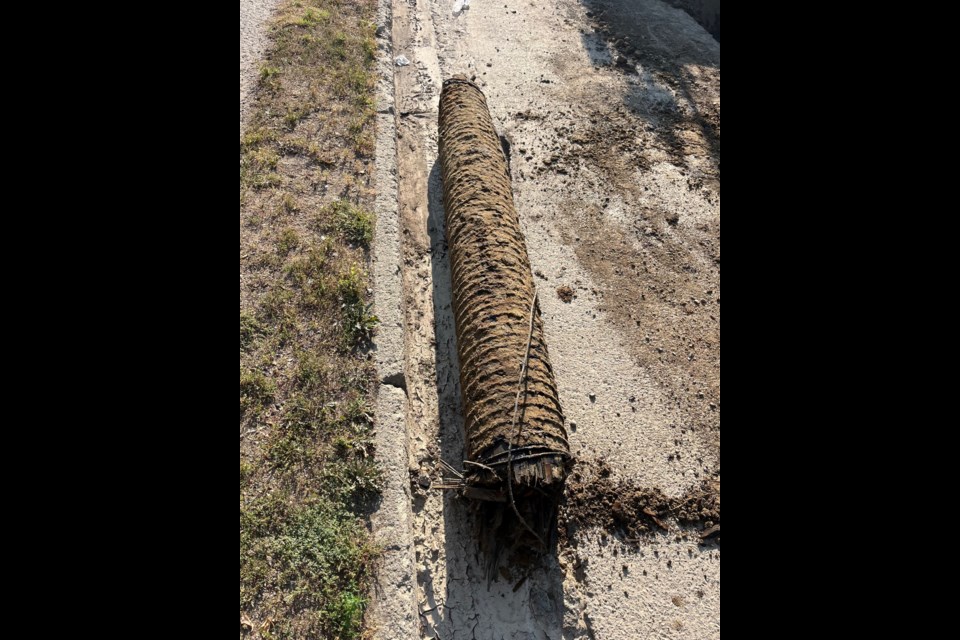MOOSE JAW - The City of Moose Jaw has existed for 121 years, so it’s likely not surprising that city crews sometimes come across odd or interesting things under the streets during construction projects.
Case in point: contractors discovered a wooden water pipe on Aug. 13 while digging near the intersection of Ninth Avenue Southwest and Coteau Street East. The six-foot-long, 12-inch-diameter pipe appeared to be in surprisingly good condition for something buried under the street for decades — or centuries.
Contractors were able to excavate the pipe and keep it intact.
Travis LeBlanc, manager of design and projects at city hall, said he was “very surprised” by the condition and shape of the cylindrical object that the contractors recovered.
“Typically, when we come across wood water mains, they’re very brittle or broken already. They are (found) throughout the city in some of the older parts of the city (about once a year),” he said.
“This is not the first time I’ve seen a wood water main, but (it’s) the first time I’ve seen one of this kind in good shape.”
The city abandoned many of those wood water pipes where they were when it began to install artificial water and sewer infrastructure. Wood water pipes that are dry usually collapse into themselves because the wood is no longer swollen from the water, so it’s possible this pipe had liquid sloshing around at one point to preserve it so well.
However, LeBlanc said there was no water inside this pipe, only dirt.
Besides wood water pipes, other oddities that construction crews and contractors have discovered under the roads include big blocks of concrete that seemingly serve no purpose and old railway ties on Main and High streets.
LeBlanc noted that the city likely used those ties as part of its trolley/cable car system that once transported residents around the community.
“The wood water main stuff is rather neat. It’s showing how (city hall) used to deliver water throughout the city … to residents and how it was done in the past,” he said. “So it was an interesting idea of a wood water main wrapped in a metal wire, and that’s how it’s actually held together … .
“So, extremely unique in that sense.”
LeBlanc also thinks uncovering the former trolley railroad ties is fascinating because of their historical connection, although sometimes, finding these objects is more of an inconvenience or hindrance for crews than a benefit.
Crews usually dispose of these items in the garbage, although with this wood pipe, the municipality may clean it up — it has a less-than-pleasant odour — and display it at city hall, he said.
City hall says it has installed 1,100 metres of new feeder mains and 2,400 metres of new water mains during this year’s infrastructural renewal program — formerly called the cast iron water main replacement program.
“The infrastructure renewal program is actually going fairly well,” LeBlanc said.
Contractors have wrapped up all work on Main Street and River Street, while work on Coteau Street east and west will conclude soon, he continued. Crews are working east on the 800 block and will test the water mains and finish a service lift station before sealing everything.
Meanwhile, work on Grace, Hawthorne and Corman is moving along “with some hiccups,” but should be finished soon, LeBlanc added.




